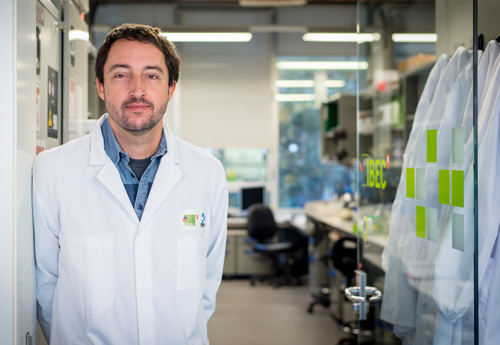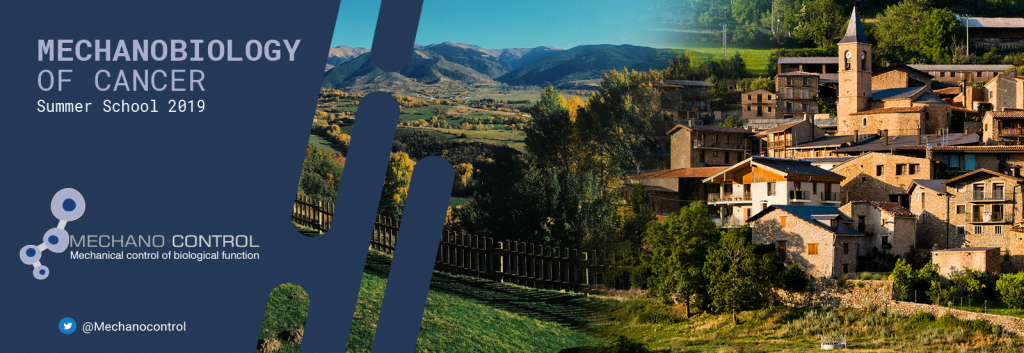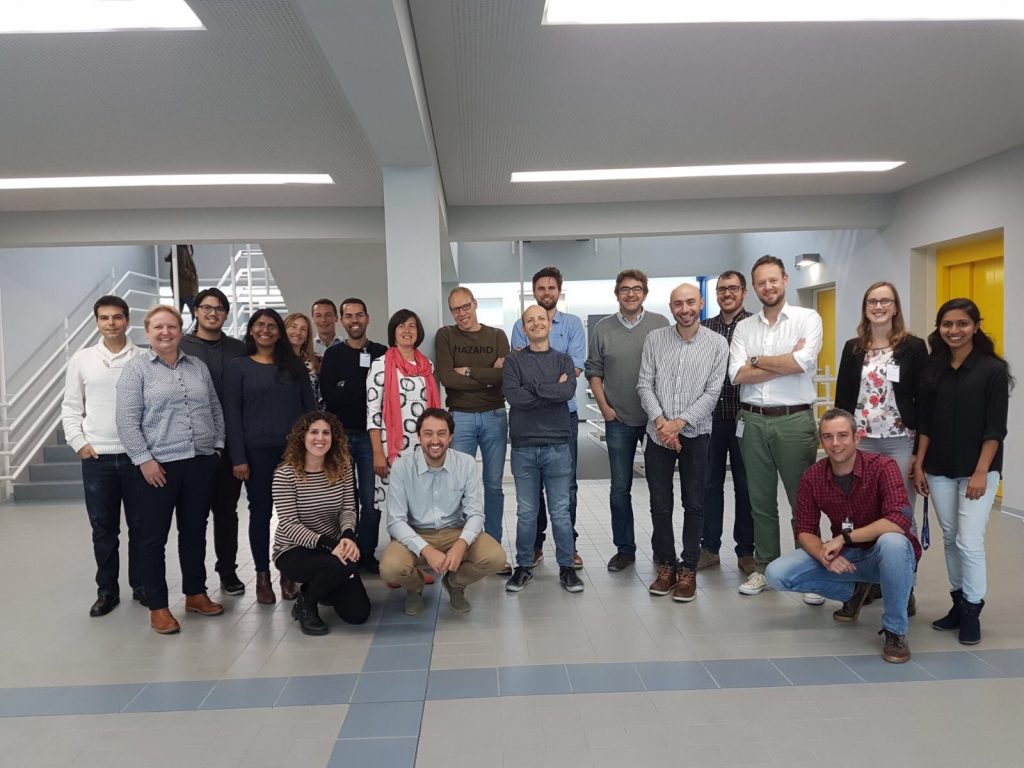Short name: IBEC
Full name: Institute for Bioengineering of Catalonia
Address: C. Baldiri Reixac, 10-12, 08028 Barcelona, Spain
Principal investigator/contact: Dr. Pere Roca-Cusachs
 The Institute for Bioengineering of Catalonia (IBEC) is a research institute covering most bioengineering fields, from basic research to medical applications, aiming to act as an international reference in this field. IBEC was established in 2005 by the Government of Catalonia, the University of Barcelona (UB) and the Technical University of Catalonia (UPC) and is located at the Barcelona Science Park (PCB) sharing also facilities with the Bellvitge University Hospital (BUH). IBEC hosts around 200 researchers and technicians, which are part of its own staff or are associated to the UB, UPC and The Biomedical Research Networking centre (CIBER) or coming from different recruitment programs of research staff (e.g. ICREA and others). Within IBEC, the project will be carried out in coordination between the groups of Drs. Pere Roca-Cusachs (project coordinator) and Xavier Trepat.
The Institute for Bioengineering of Catalonia (IBEC) is a research institute covering most bioengineering fields, from basic research to medical applications, aiming to act as an international reference in this field. IBEC was established in 2005 by the Government of Catalonia, the University of Barcelona (UB) and the Technical University of Catalonia (UPC) and is located at the Barcelona Science Park (PCB) sharing also facilities with the Bellvitge University Hospital (BUH). IBEC hosts around 200 researchers and technicians, which are part of its own staff or are associated to the UB, UPC and The Biomedical Research Networking centre (CIBER) or coming from different recruitment programs of research staff (e.g. ICREA and others). Within IBEC, the project will be carried out in coordination between the groups of Drs. Pere Roca-Cusachs (project coordinator) and Xavier Trepat.
Team Leader and project coordinator, Dr. Pere Roca-Cusachs:
Dr. Roca-Cusachs completed his doctorate at the University of Barcelona in the field of Biophysics in 2007, and then carried out post-doctoral research at the lab of Prof. Michael Sheetz in Columbia University. He established his own research group in 2012 when he obtained a position as junior group leader at the Institute for Bioengineering of Catalonia (IBEC). Dr. Roca-Cusachs also holds a position as assistant professor (Professor agregat) at the University of Barcelona. The research of the group aims at unravelling the molecular mechanisms that cells use to detect and respond to mechanical stimuli like forces or tissue rigidity, triggering downstream cell responses that drive development, cancer, or wound healing. To this end, biophysical techniques like magnetic tweezers, Atomic Force Microscopy, traction microscopy, and microfabricated force sensors are combined with molecular biology and advanced optical microscopy. Using this approach, the group has recently provided several key contributions to the field that include:
• The roles of integrins α5β1 and αvβ3 as force transmitters and transducers (Roca-Cusachs et al., 2009, PNAS)
• A fundamental micro-structure that cells use to mechanically probe the environment (Ghassemi et al., 2012, PNAS)
• The role of α-actinin as a force transmitter to the matrix (Roca-Cusachs et al., 2013, PNAS)
• How integrins regulate tissue rigidity sensing (Elosegui-Artola et al., 2014, Nature Materials)
• The physical principles driving membrane response to mechanical forces (Kosmalska et al., 2015, Nature Communications)
• The biophysical molecular mechanism by which cells sense tissue rigidity and transduce it into downstream signalling (Elosegui-Artola et al., 2016, Nature Cell Biology)
As a research output, Dr. Roca-Cusachs has 22 SCI-indexed publications in journals including Science, Nature Cell Biology, Nature Materials, Nature Communications, or PNAS, an h-index of 17, and 1490 citations (according to the Web of Science). Even though Dr. Roca-Cusachs is a young researcher with a recently established laboratory, he is currently the coordinator of the Spanish Network of Excellence in Mechanobiology (MecBio), coordinating 10 research groups across Spain. This role, combined with his participation in different European projects (outgoing and returning Marie Curie Fellowships, and Innovative Training Network BIOPOL) confirms his capacity as coordinator.
Dr. Xavier Trepat obtained his doctorate at the University of Barcelona in the field of Biophysics in 2004, and then carried out post-doctoral research at Harvard University. He established his independent research group at the University of Barcelona in 2008. In 2011, he obtained an ICREA Research Position and become Group Leader of the Integrative Cell and Tissue Dynamics at IBEC. His research focuses on two major interdisciplinary lines: 1) the study of the biomechanical determinants of cell function 2) the study of the biophysical basis of cell migration and adhesion. He had developed several new micro and nanotechnologies, applying them to the study of basic biomechanical mechanisms in health and disease. Prof. Trepat’s track record in the development of technology, basic and applied science include (in all listed contributions he is first, last, and/or corresponding author):
• A stretching system to measure cellular nanomechanics (Trepat et al, Nature, 2007)
• Traction microscopy to study collective cell migration (Trepat et al, Nature Physics, 2009; Tambe et al, Nature Materials, 2011)
• Plithotaxis : a mechanism of collective cell guidance (Tambe et al, Nature Materials, 2011)
• Mechanical waves during tissue expansion (Serra-Picamal et al, Nature Physics, 2012)
• Contractile arcs during wound healing (Brugués et al, Nature Physics, 2014)
• Hydraulic fracture in living tissues (Casares et al, Nature Materials, 2015)
• Identification of the proteins that transmit forces at cell-cell junctions (Bazellières et al, Nature Cell Biology, 2015)
As a research output, Dr. Trepat has 54 SCI-indexed publications in journals including Nature, Nature Materials, Nature Physics, Nature Cell Biology or PNAS. He has an h-index of 26, and 2722 citations (according to Web of Science). Dr. Trepat is also one of the few researchers awarded with three ERC Grants: Starting Grant, Consolidator grant and ERC Proof of Concept.









 Mind the Byte is a five-years-old Spanish SME specializing in Computational Chemistry applied to Drug Discovery. It applies different computational techniques in order to help companies and researchers in their first steps of pharmaceuticals and drugs developing. It is a dual company, since it offers both custom services and software as a service a service (SaaS) in the field of computational chemistry. It is a very innovative SME, which is also involved in European R&D projects within the FP7 and H2020 programmes. Its research lines are focused on own-development algorithms and also on drug discovery (including small and macromolecules).
Mind the Byte is a five-years-old Spanish SME specializing in Computational Chemistry applied to Drug Discovery. It applies different computational techniques in order to help companies and researchers in their first steps of pharmaceuticals and drugs developing. It is a dual company, since it offers both custom services and software as a service a service (SaaS) in the field of computational chemistry. It is a very innovative SME, which is also involved in European R&D projects within the FP7 and H2020 programmes. Its research lines are focused on own-development algorithms and also on drug discovery (including small and macromolecules). King’s College London (KCL) is one of the 20-top universities in the world. The single molecule mechanics side of the Project will be conducted in the Department of Physics and the Randall Division of Cell and Molecular Biophysics, thus guaranteeing the feasibility of the Project both from the biological side and also from the technical part, involving the single molecule experiments. The interplay between the physics and biology-led parts of the research ensures the success of the project, in line with the interdisciplinary ethos of the overall Project.
King’s College London (KCL) is one of the 20-top universities in the world. The single molecule mechanics side of the Project will be conducted in the Department of Physics and the Randall Division of Cell and Molecular Biophysics, thus guaranteeing the feasibility of the Project both from the biological side and also from the technical part, involving the single molecule experiments. The interplay between the physics and biology-led parts of the research ensures the success of the project, in line with the interdisciplinary ethos of the overall Project. The INM – Leibniz Institute for New Materials in Saarbrücken, Germany, is an internationally leading center for materials research. It has a particular focus on interfaces phenomena related to biological materials and their exploitation in the development of innovative biomaterials and structures. INM is a scientific partner to national and international research institutions and a provider of research and development for companies throughout the world. INM has about 200 employees and is an institute of the Leibniz Association. In the context of this project, INM brings expertise in biomaterial design and characterization, photoresponsive molecular systems. INM has a strategic role in this project, providing novel light-based molecular tools for tuning cell-ECM interactions and incorporating them in different biomaterials with dynamic mechanical and topological properties. This material’s platform represents a unique tool for understanding adhesion and materials-related questions in tissue function.
The INM – Leibniz Institute for New Materials in Saarbrücken, Germany, is an internationally leading center for materials research. It has a particular focus on interfaces phenomena related to biological materials and their exploitation in the development of innovative biomaterials and structures. INM is a scientific partner to national and international research institutions and a provider of research and development for companies throughout the world. INM has about 200 employees and is an institute of the Leibniz Association. In the context of this project, INM brings expertise in biomaterial design and characterization, photoresponsive molecular systems. INM has a strategic role in this project, providing novel light-based molecular tools for tuning cell-ECM interactions and incorporating them in different biomaterials with dynamic mechanical and topological properties. This material’s platform represents a unique tool for understanding adhesion and materials-related questions in tissue function. The UPC is the top technical university in Spain, and is a major hub in mathematical modelling and computational mechanics (with 7 ERC grants by faculty members of the UPC in these fields). It nurtures a stimulating environment and specialized educational initiatives, such as the Erasmus Mundus Master in Computational Mechanics. The UPC is located at the Barcelona Knowledge Campus (BKC), together with the Universitat de Barcelona and various international research centers including IBEC, the Barcelona Supercomputing Centre and CIMNE, where Dr. Arroyo is affiliated.
The UPC is the top technical university in Spain, and is a major hub in mathematical modelling and computational mechanics (with 7 ERC grants by faculty members of the UPC in these fields). It nurtures a stimulating environment and specialized educational initiatives, such as the Erasmus Mundus Master in Computational Mechanics. The UPC is located at the Barcelona Knowledge Campus (BKC), together with the Universitat de Barcelona and various international research centers including IBEC, the Barcelona Supercomputing Centre and CIMNE, where Dr. Arroyo is affiliated. The Institute for Bioengineering of Catalonia (IBEC) is a research institute covering most bioengineering fields, from basic research to medical applications, aiming to act as an international reference in this field. IBEC was established in 2005 by the Government of Catalonia, the University of Barcelona (UB) and the Technical University of Catalonia (UPC) and is located at the Barcelona Science Park (PCB) sharing also facilities with the Bellvitge University Hospital (BUH). IBEC hosts around 200 researchers and technicians, which are part of its own staff or are associated to the UB, UPC and The Biomedical Research Networking centre (CIBER) or coming from different recruitment programs of research staff (e.g. ICREA and others). Within IBEC, the project will be carried out in coordination between the groups of Drs. Pere Roca-Cusachs (project coordinator) and Xavier Trepat.
The Institute for Bioengineering of Catalonia (IBEC) is a research institute covering most bioengineering fields, from basic research to medical applications, aiming to act as an international reference in this field. IBEC was established in 2005 by the Government of Catalonia, the University of Barcelona (UB) and the Technical University of Catalonia (UPC) and is located at the Barcelona Science Park (PCB) sharing also facilities with the Bellvitge University Hospital (BUH). IBEC hosts around 200 researchers and technicians, which are part of its own staff or are associated to the UB, UPC and The Biomedical Research Networking centre (CIBER) or coming from different recruitment programs of research staff (e.g. ICREA and others). Within IBEC, the project will be carried out in coordination between the groups of Drs. Pere Roca-Cusachs (project coordinator) and Xavier Trepat.